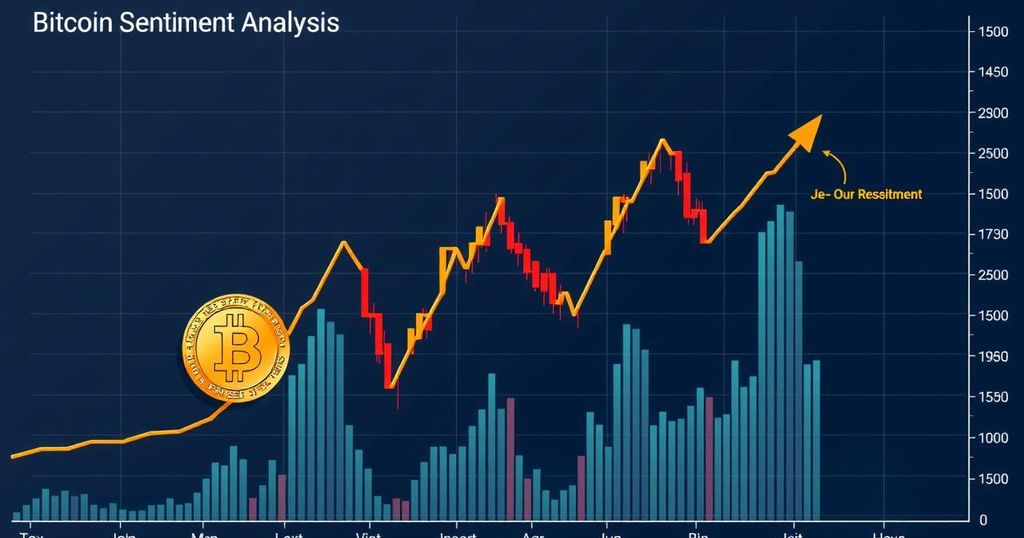Analyzing Bitcoin: Indicators Suggest Price Potential Amid Market Fluctuations
Despite recent price drops causing concern among Bitcoin investors, several indicators suggest that the cryptocurrency has room for recovery. Historical performance shows significant growth, while declining exchange balances and a low inflation rate support a bullish outlook. Key metrics, including the MVRV score and miner reserves, reinforce the notion that Bitcoin may continue its upward trajectory following the current downturn.
The recent downturn in the Bitcoin market has incited distress among certain crypto stakeholders, prompting them to divest their holdings. Specifically, the introduction of spot Bitcoin ETFs has witnessed significant capital withdrawals in the past two days, following a period where these instruments attracted over $36 billion in assets. Nevertheless, the analysis presented in the accompanying charts indicates that Bitcoin retains considerable potential for future price appreciation.
1. Bitcoin Price Trajectory: Historical data since its initiation in 2009 demonstrates a bullish trend in Bitcoin’s value, climbing from negligible levels to a peak of $108,200 in the previous week. This remarkable increase underscores Bitcoin’s status as the highest performing major asset globally, with an outstanding rise exceeding 9.5 million percent since its inception. Historical patterns reveal that, despite severe corrections—such as an 85% drop between 2017 and 2019 and similar downturns noted in subsequent years—Bitcoin has repeatedly rebounded from these declines, suggesting a likely continuation of this trend.
2. Declining Exchange Balances: Another significant indicator for Bitcoin recovery is the decreasing balance of Bitcoin held on exchanges, now at a multi-year low of 2.24 million coins. This reduction from over 2.7 million coins indicates robust demand, predominantly driven by institutional investors like MicroStrategy and Marathon Digital, as well as growing interest in spot Bitcoin ETFs, which have collectively amassed over $110 billion in holdings.
3. Easing Bitcoin Inflation: Unlike fiat currencies, which possess an unlimited supply, Bitcoin is capped at 21 million coins, of which 19.79 million are currently circulating. Significant supply reductions occur through halving events that transpire every four years, consequently lowering Bitcoin’s annual inflation rate to 1.13% from 12% in 2015. This trend, when contrasted with the soaring M2 money supply of the U.S. dollar, suggests that Bitcoin may continue to be a hedge against inflation.
4. Miner Reserves Declining: Current data reveals a significant dip in Bitcoin held by miners, with reserves falling to approximately 1.9 million coins—the lowest since 2010. Although normally regarded as a bearish signal due to increased circulating supply, this decline coincides with rising Bitcoin prices, indicating that robust demand may counterbalance the effects of miner capitulation.
5. Bitcoin MVRV-Z Score: The Bitcoin market value to relative value score (MVRV) has dropped to 2.86, indicating that the asset is not in an overbought condition, as it typically is when the score reaches 3.7. Furthermore, Bitcoin’s hash rate achieving record highs reinforces the health of the network, while the analysis of in-the-money and out-of-the-money positions reveals that most investors are currently profitable and inclined to hold their assets.
In summary, the aforementioned factors collectively forecast an optimistic outlook for Bitcoin. The historical upward momentum, significant reductions in exchange balances, declining inflation rates, decreasing miner reserves, and favorable MVRV evaluation all signal that Bitcoin’s price holds potential for further escalation in the near future. Investors appear to be maintaining their positions rather than capitulating, further supporting the notion that we may witness a robust recovery.
The current dynamics in the cryptocurrency market are particularly relevant as Bitcoin has experienced a notable price decrease. This situation has resulted in apprehension among investors, leading to some selling their assets. Traditionally, Bitcoin has demonstrated a resilient capacity to rebound from corrections, supported by its historical performance and the mechanics of its supply chain. Moreover, the activity of institutional investors and the functionality of Bitcoin ETFs amplify the ongoing narrative that Bitcoin still offers significant growth opportunities despite temporary setbacks.
In conclusion, while the recent Bitcoin price volatility has caused some unease within the market, several key indicators suggest a positive outlook for recovery. The historical price trajectory, increased institutional demand reflected in declining exchange balances, a low inflation rate compared to fiat currencies, diminished miner reserves, and a non-overbought MVRV score collectively indicate that there remains substantial room for Bitcoin’s price to appreciate over time. Consequently, investors are likely to observe a potential resurgence in Bitcoin valuation in the near future.
Original Source: www.banklesstimes.com








Post Comment